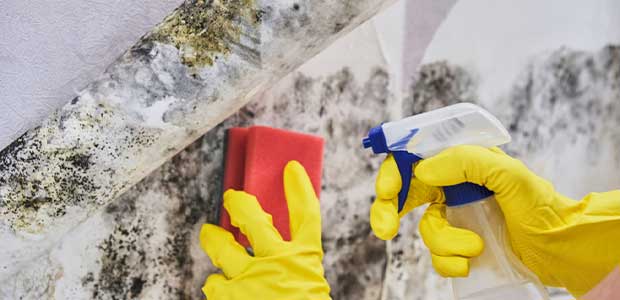
The Effects of Mold on Workers and How to Keep It Out of Your Workplace
The presence of mold at work can cause negative health effects for some workers.
- By Alex Saurman
- Nov 09, 2022
Employees work in a multitude of environments, each posing its own risks. In some environments, employees may be at greater risk for injury and illnesses. One hazard some employees may be exposed to on the job is mold.
Although it’s found naturally, mold can also be found in environments with “temperatures above 70” degrees Fahrenheit, “high humidity,” “water damage” and “dampness,” OSHA said.
Although most mold is not harmful, it can have negative effects on workers. When exposed to mold, workers may suffer from a stuffy nose, eye irritation and wheezing. Some workers may also have mold allergies, leading to similar symptoms as well as sneezing, coughing and mucus, according to The Asthma and Allergy Foundation of America.
Though these symptoms might not sound bad, people with underlying health conditions, like a weakened immune system, asthma or lung disease, are at greater risk for these symptoms, OSHA says. Workers who have allergic bronchopulmonary aspergillosis may also deal with more severe symptoms. The Asthma and Allergy Foundation of America lists a few of these: “severe wheezing, coughing, chest tightness and shortness of breath.”
There are no specific federal standards that address mold in the workplace, but that doesn’t mean employers shouldn’t take action to protect workers from this hazard. OSHA provides tips on how to keep mold from growing in your workplace:
- Be sure to fix any leaks or wet spots as soon as they occur. For leaks, find out what caused the issue and fit it as soon as possible. If you find a wet or damp spot, be sure to clean it within 48 hours.
- Use insulation, air circulation, ventilation or dehumidifying to “preven[t] moisture from condensing.”
- Ensure HVAC units are inspected and working properly, this includes changing the filters. Employers should also clean out HVAC drip pans.
- Keep the humidity level between 25 to 60 percent if possible, if not below 70 percent.
- Inspect buildings and make sure they have proper drainage.
OSHA also points to a few standards with related content. Standard 29 CFR 1910.141 outlines sanitation of certain places of work in the general industry, and 29 CFR 1926.51 highlights sanitation in the construction industry.
To learn more about mold prevention, read OSHA’s A Brief Guide to Mold in the Workplace or the agency’s Mold Quick Card.
About the Author
Alex Saurman is a former Content Editor for Occupational Health & Safety,who has since joined OH&S’s client services team. She continues to work closely with OH&S’s editorial team and contributes to the magazine.